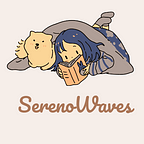Korean Folklore: Legends, Myths, and Tales of the Enchanted Land
Discover the Magical Realm of Korean Mythology and Immerse Yourself in Ancient Stories
As an avid fan of Korean mythology and folklore, I take pleasure in sharing some fascinating legends and tales from the enchanted land of Korea. The rich tapestry of Korean folklore has been woven since ancient times and continues to inspire and captivate the imagination of generations. So, curl up with a cup of tea and prepare to be transported to a world of magical creatures, legendary heroes, and mystical realms.
╰┈➤
Let’s start with the legend of the dragon king, or “Yongwang” in Korean. According to the myth, the dragon king was the ruler of the sea and had the power to control the rain and the wind. It was believed that the fishermen who invoked him with sincerity and respect would be granted a bountiful catch of fish. Even today in some coastal towns, people put up shrines to honor the dragon king and entreat for his blessings.
╰┈➤
Another popular legend involves the phoenix, or “Bonghwang” in Korean. The phoenix was believed to be a symbol of compassion and mercy, and its feather was said to bring good fortune and protection to those who possessed it. In Korean folklore, the phoenix also represented the union of opposing forces, such as the sun and the moon, and was revered as a symbol of peace and harmony.
╰┈➤
Among the famous tales in Korea is the story of “Heungbu and Nolbu,” two brothers who represent the conflicting traits of greed and generosity. In the story, Nolbu was a rich and selfish man who mistreated his poor brother, Heungbu. However, despite Heungbu’s hardships, he remained a humble man and showed kindness to others. As the story unfolds, Heungbu’s fortunes change for the better, while Nolbu’s greed leads to his downfall. The moral of the story is clear- kindness, generosity, and humility pay off more than selfishness and greed.
╰┈➤
One of the most enduring creatures in Korean folklore is the “Gumiho,” or the nine-tailed fox — a legendary being with the ability to shape-shift into a seductive woman. The Gumiho was portrayed as cunning and mischievous, and tales of their cunning and their adventures captivated the young and old alike for centuries. Although the Gumiho is often depicted as a fearsome creature, some stories present them as tragic figures desperate to be freed from their cursed form.
・❥・・❥・・❥・
These are some of the enchanting stories and fables that form the mosaic of Korean folklore. From the majestic dragon king to the nine-tailed fox, the myths of Korea provide a glimpse into the people’s values, beliefs, and traditions. They offer us a chance to explore a world of beauty, wisdom, and wonder.
In conclusion, Korean mythology and folklore are a treasure trove of wisdom and wonder. They speak to the human experience- our hopes, our fears, our values, and our beliefs — in a way that transcends language and culture. I hope you enjoyed this brief journey to the enchanted land of Korea and that it has sparked your curiosity about the rich world of Korean folklore.
Follow my medium profile for more such content!
SerenoWaves
꒷꒦︶꒷꒦︶꒷꒦︶꒷꒦︶꒷꒷꒦︶꒷꒦︶꒷꒦︶꒷꒦︶꒷꒦︶꒷꒷꒦︶꒷꒦︶꒷꒦︶꒷꒦︶꒷꒦︶
